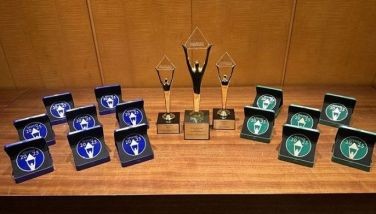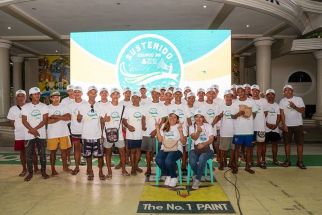Big on minimalism
The world in the eyes of a classic minimalist knows none or little about prints, colors and embellishment. This is not to suggest that the movement lacks the ability to be creative. Instead, from the point of view of the classic minimalist as in the case of architect Ludwig Mies van der Rohe, the movement focuses on function, improvisation and purpose.
Considering the austere and restrained nature of minimalism, it has managed to evolve throughout the years to embrace fashion’s ever-changing moods and temperaments. Fresh off the recently concluded shows for Spring/Summer 2012, designers both locally and abroad focused on superb tailoring, hushed color palettes and sleek silhouettes for their collections. To update their takes on minimalism, some designers looked to sport-inspired references and color blocking techniques. Philip Lim, for instance, updated crisp separates reflective of kites via functional snaps, zippers and drawstrings. On a similar note, Celine’s Phoebe Philo, who has consistently been churning out the most covetable minimalist collections season after season, once again mastered reductionist fashion by introducing new fangled approaches to the most basic of garments like the “great white shirt.” The designer cleverly proposed fresh renditions onto the classic through rounded shoulders, “basques” (otherwise referred to as peplums) and sharp collars.
At the recently concluded Philippine Fashion Week, a handful of our very own visionary designers showed strong affinity for clear, defined lines, crisp patterns and a soothing color palette. This seemingly collective movement from some of the most innovative local designers brought to the fashion front a new twist on androgynous elements, refreshing skill at reworking classics and a penchant for new color palettes and fabrication.
The debut collection of Nixon Marquez took inspiration from men’s wear. Marquez reworked classics like the crewneck shirt, tuxedo jacket and the wide-leg trouser by altering its proportions. His soothing palette of white and beige worked seamlessly to balance out the new shapes and form that he introduced onto each garment.
Color blocking and cubism were the main inspirations behind Noel Crisostomo’s collection. Bold lines in stark black were keys in creating defined proportions for each ensemble. Moreover, his penchant for infusing local fabrics like piña onto utterly modern designs was very inventive.
Julius Tarog showed impeccable tailoring with his collection for Spring/Summer 2012 as he worked on the smoking jacket by introducing new fabrication. He also played with contrasts, combining fluid fabrics like sheer with pin sharp tailored suits. If anything, Tarog’s collection reminded one of a distinct elegance that goes hand in hand with restraint.
It appears that Ronald Alzate was Philippine Fashion Week’s bright, young thing. Alzate’s strength lies in his ability to create clothes that are impeccable and thoroughly wearable. His Nefertiti collection is a departure from the costume-y inclinations often presented on the runways as he presented pieces that were spot-on to address his wearer — the contemporary woman.
If anything, Jian Lasala’s collection for Spring/Summer 2012 was a showcase of clean lines and refreshing hues. His aesthetic, as clearly seen in his collection of jersey dresses for the coming season, reflected a fascination for extreme minimalism. His candy-colored pieces emphasized on a wide variety of necklines and hemlines, which were easy on the eyes and desirable at every level.
















